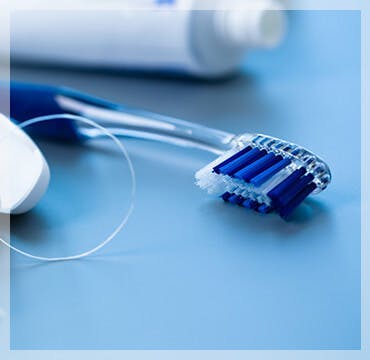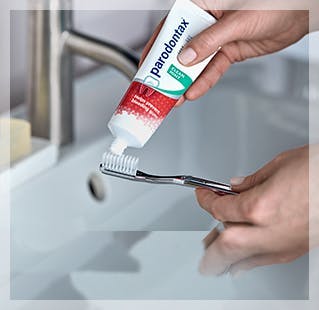Are Your Gums Healthy? Tips to Improve Gum Health
Did you know that two in five US adults over the age of 30 has some form of gum disease?5 While the condition is common, failing to spot and treat the causes of gum disease early can put you at risk of developing periodontitis – the leading cause of tooth loss for adults.1,6 It could also jeopardize your health in general, as severe gum disease has been associated with other diseases, such as heart disease and stroke.2,7
Knowing what healthy gums look and feel like will help you keep your dental health in good shape and help you to spot the early signs of gum disease. Should you notice any changes to your gums, contact your dental professional.
What Healthy Gums Look Like
Healthy gums are pink and firm to the touch. Unhealthy gums are typically red, swollen, bleed during brushing and flossing, and may start pulling away from your teeth. Your dentist or dental hygienist is the best person to speak to for a professional gum disease exam.
Symptoms of Gum Disease
When your gums bleed, it’s a warning sign that you may have gum disease. Plaque build-up on your teeth can causes your gums to become red, swollen and prone to bleeding, which can lead to gingivitis. If caught in its early stages, gingivitis can be prevented by twice daily brushing and flossing. You should also see your dentist to check the problem hasn’t created further complications. Bad breath can also be symptomatic of unhealthy gums.
What Causes Unhealthy Gums?
In most cases, dental hygiene is at the root of gum problems. If plaque – a sticky, transparent film that coats the teeth – is not effectively brushed, flossed and rinsed away it can lead to irritation, inflammation and bleeding gums.2
Smoking increases your risk of gum disease twofold, while poor nutrition, medical conditions like diabetes or cardiovascular disease) and a family history of periodontitis, obesity and stress can all be risk factors for developing gum disease.3 Certain medications can also affect your oral health and may contribute to your risk of gum disease.
How Can You Improve Your Gum Health?
Brushing, flossing and seeing a dental professional for regular cleanings is the routine you need to help prevent and reverse early-stage gum disease.
Brush twice daily with a stannous fluoride toothpaste such as Parodontax Complete Protection that kills and removes plaque with brushing and always follow the instructions given by your dental professional to care for your teeth and mouth. Don’t forget to brush your tongue, as it can also harbor odor-causing bacteria.3
Regular dental appointments are key to identifying early gum disease symptoms. The quicker problems are identified, the easier it can be to resolve gum disease at home by brushing and flossing.
A gum-friendly diet will be packed with plenty of calcium, fiber-rich fruits and vegetables, plus foods containing vitamin C.4 Eating bell peppers, broccoli, brussels sprouts, oranges and strawberries will help keep your gums and teeth clean and healthy.4
Drink plenty of fluoridated water, which helps swish away harmful plaque bacteria and prevent tooth decay.
What a Periodontist Can Do for You
A periodontist is someone who specializes in the prevention, diagnostic exam and treatment of periodontal disease. If you are concerned you could be developing gum disease, consult a dental professional about making an appointment with a periodontist to further discuss your symptoms. In addition to your dentist, a periodontist will be able to advise you on the best course of action for looking after your oral health.





